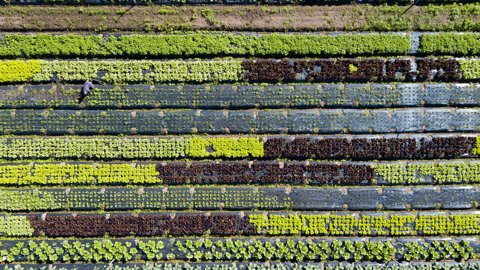Earlier this summer, APG made a €50 million investment via a private placement in a blue bond issued by Danish energy company Ørsted, on behalf of pension fund ABP. Blue bonds are a relatively new type of bond structure that aim to finance projects that promote healthy seas and oceans. How exactly will this issue contribute to these goals? And what are the advantages and disadvantages of such a private placement?
-
APG invests in a blue bond issued by Ørsted. The issue’s proceeds will be used to conserve and restore marine ecosystems and promote sustainable maritime transportation. This is the first blue bond issued by a company.
-
The bond’s financing objectives (60 percent of the proceeds are earmarked for marine biodiversity) and innovative structure mean it aligns well with the biodiversity policy of APG's pension fund client, ABP.
-
By actively participating in this issue, APG hopes to contribute to the development of the blue bond market.
Ørsted is a global leader in offshore wind energy. The downside of offshore wind farms is that they can lead to biodiversity loss. Ørsted has issued a blue bond whose proceeds will be used for two purposes. Most are (60 percent) earmarked for projects that help preserve and restore marine ecosystems. These include measures to restore the habitat of animal species and the use of “bubble curtains” to significantly reduce noise pollution during the construction of offshore wind farms. Indeed, noise and vibrations under water have a major impact on marine animals such as dolphins and whales, which use sound waves to find their way around and communicate with each other. The rest of the proceeds will go towards making marine transportation more sustainable. For example, by reducing the carbon emissions of the Crew Transfer Vessels that carry maintenance engineers to and from offshore wind farms by using alternative fuel.
Exception
Tim Slütter (Head of European Credits), Oscar Jansen (Expert Portfolio Manager Credits) and Willem Hettinga (Senior Responsible Investment Manager) were involved in the Ørsted blue bond investment on behalf of APG. Given its overall portfolio size, APG would not normally make such a relatively small-scale investment. The reason for making an exception for this bond lies in its innovative structure and the opportunities it offers to reflect the responsible investment objectives of APG’s pension fund clients (biodiversity plays an important role in ABP’s investment policy). Ørsted’s issue is not the first blue bond, but it is the first issued by a company.
Slütter: “We were approached because Ørsted was keen to issue an innovative blue bond. On a small scale, because it was something new that had not come to the capital market before. We had a number of sessions to determine what we considered important in this structure, also with representatives from Ørsted. Many of the points we raised also went into the documentation for this bond.”
Go the extra mile
One of these points was that APG stipulated that a larger portion (60 percent) than originally planned of the bond’s proceeds be spent specifically on biodiversity conservation and restoration and 40 percent on sustainable shipping fuel. In addition, APG was able to give input on the pricing and maturity of the bond.
Hettinga: “We had already invested in labeled bonds. Green bonds, social bonds, sometimes also with a thematic characteristic. But we buy these issues when the terms have already been fixed and have a less active role in this as investors. The beauty of private placements like this blue bond is that the bank arranging the issue proactively looks for a few large, reliable parties interested in investing in a particular theme - in this case, biodiversity. An investment like this involves more work for us than other bonds, such as more extensive due diligence. But when an opportunity like this arises to match the specific priorities and wishes of our pension fund clients, we are happy to go the extra mile.”
Oyster beds
When it comes to contributing to biodiversity, Ørsted is ambitious, says Jansen. “The company is very clear about the fact that they want to reduce the damage caused by the construction of wind farms to zero and even go a step further. In their renewable energy business, they want to make a net positive contribution to biodiversity, which means that they not only maintain the existing level of biodiversity but also contribute to further restoration. For example, they make an effort to make wind turbine foundations suitable for the development of oyster beds and to ensure that marine life can flourish.”
Ørsted can use the funds earmarked for biodiversity for new or existing projects. In addition to APG as lead investor, two other smaller investors are participating, together accounting for the other 50 million euros, bringing the total issue size to 100 million. For an innovative instrument like this, it is important that a large investor with a solid reputation like APG is involved as an anchor investor.
Illiquid
Jansen: “I think there was a good reason the bank arranging this issue came to us. When it comes to these types of bonds and labeled bonds like green bonds, APG has a good reputation in the market. This is not the first deal where Willem and I have been involved in promoting robust frameworks and new issuance. In terms of these types of bonds, we are one of the larger investors, globally.”
Ørsted was no stranger to APG prior to this issue, as APG had previously invested directly in the company’s bonds. APG has already demonstrated its confidence in the company; something which is particularly important when it comes to an illiquid investment like this.
Hettinga: “Although the company meets our stringent sustainability requirements, we have agreed to maintain close contact on this blue bond. In a year’s time, we will want to know how much of the bond’s proceeds have been spent on biodiversity. The second important element is impact reporting. What effect have the projects financed by the bond had on biodiversity and is this impact growing?”
First of its kind
Slütter: “We also agreed with the company that it will be transparent on the projects the money has financed. This reporting is very important, because for impact investments we want to know specifically what the money has been used for and what it has achieved. Without becoming too general about developments, which companies have a tendency to do.”
The team hopes that Ørsted’s blue bond will lead to more bond investments with a biodiversity focus. Jansen: “It is the first blue bond of its kind, and by actively participating in this investment we hope to lay a foundation in the market. I have already had quite a few calls from banks asking how we did this investment and whether we are interested in doing this with other companies as well. So, we hope that this is just the start and that we can expand this type of investment to more companies and contribute to the development of this market.”



